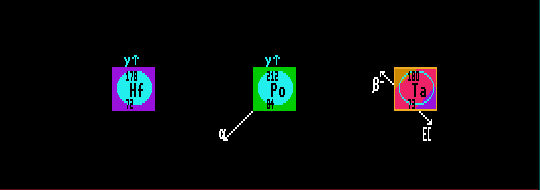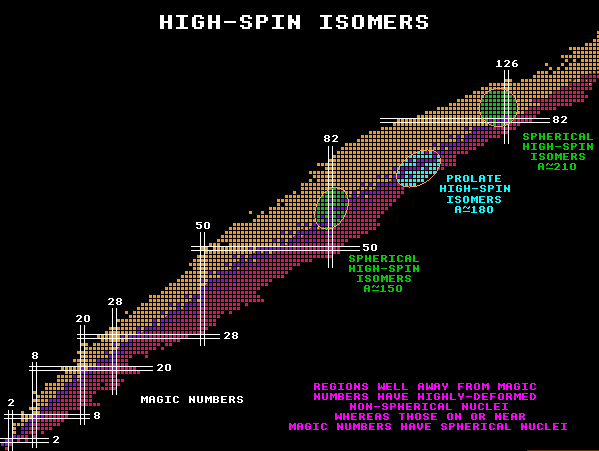


A prolate isomer of hafnium-178 has high spin of 16 units and a halflife of 31 years, its high spin deriving wholly from just four of its 178 nucleons orbiting the nucleus. The energy difference between the ground state (which is stable) and the high-spin state is high at 2447 keV. The high spin state eventually decays by the gamma decay route, which is highly inhibited due to the large spin that must be removed by the emitted gamma rays.
See Quantum Nucleonic Reactor.
A spherical spin-trap isomer of polonium-212 with spin-18 has a very long halflife 45 seconds compared to its ground-state halflife of just 300ns. The energy difference between the ground-state and this isomeric state is quite large at 2921 keV. The isomer can be viewed as two valence nuetrons and two valence protons orbitting in the same direction around the equator of a doubly-magic lead-82 nucleus. The high-spin state decays not by gamma ray, which is again highly inhibited, but, most unusually, by alpha decay. The alpha particle must remove 18 units of spin, so this decay is also inhibited.
Tantalum-180, in its ground state, is radioactive with a short halflife of just 8.15 hours, and as such, has zero abundance on Earth. But just 75 keV above the ground state, a high spin state of spin-9 exists. Together, the high spin and low energy difference contrive to confer an extremely long halflife of 1015 years on the high-spin state. This is the only isotope to occur naturally as an isomer, and is present on Earth at 0.0125%.
A deformed isomer of tungsten-178 has a spin of 25 units shared between 8 un-paired nucleons (4 neutrons and 4 protons).
![]()
![]()